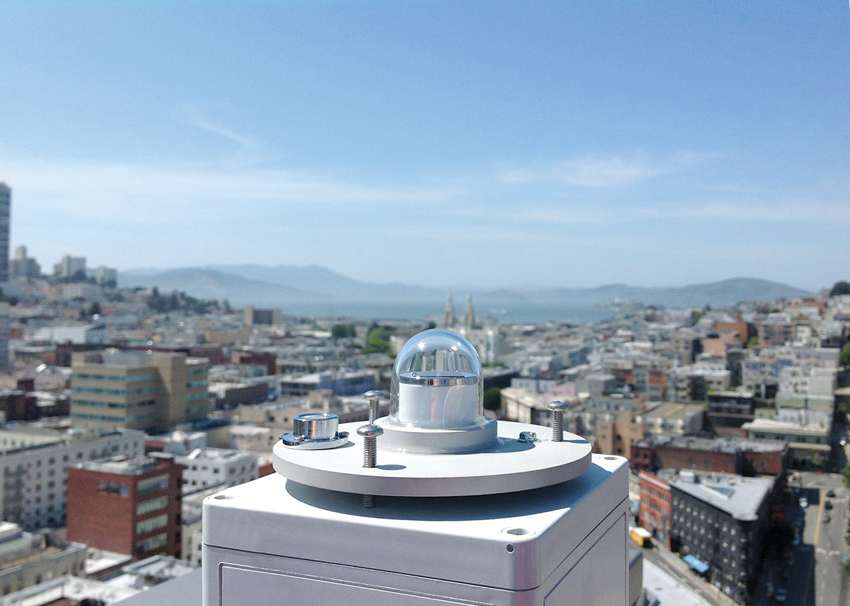Advancing the Daylighting Discussion
Introducing Automated Shading Systems
An automated shading system predicts, monitors, and responds to the unique, daily microclimate surrounding the building. These systems are comprised of motorized woven solar fabrics, advanced daylighting software, roof-mounted solar radiometers that monitor sky conditions in real time, exterior-mounted photometers that monitor sky brightness, and minimal interior-mounted photosensors that monitor for the presence of direct sunlight and brightness that may disrupt the visual environment. The system applies an advanced algorithm that considers the changing position of the sun in relation to the building and the changing solar angles at each window, along with the real-time climatic information detected by the sensors, to determine the optimal position of every shade throughout the day. The solar fabric is raised and lowered accordingly to prevent glare and solar heat gain from entering an interior space and allow soft, usable daylight into the interior. It is important to note that automation systems can be scalable and range from a sensor and a few motors to floors to whole buildings or an entire campus. Not all features are present on all systems, sensors have different design intent, and specifications and a commissioning strategy will vary accordingly.
Automated shading systems can be incorporated into the interior of a building, sometimes the exterior, or in an environmental wall, between panes of glass with sealed or ventilated air cavities to enable heat recovery, heat rejection, daylighting, and natural ventilation. Of the three options, automated interior shading systems offer a simpler, often lower-cost solution that can be applied to new construction as well as major renovations and tenant improvements.
These systems enable a designer to incorporate more glass and clearer glass into their designs, and provide occupants with a constant connection to the outdoors, without subjecting interiors to harsh glare and solar heat gain. When compared with some of the other available daylight control systems, shading systems are unique in their ability to deploy a woven solar shade, to block direct sunlight, and yet still provide a view to the outdoors. The woven nature of the solar shade enables people to see beyond the shade, unlike blinds or louvered solutions that provide a visual obstruction when in position.
By effectively managing solar heat gain, automated shading systems also create tremendous HVAC energy savings. The deployed solar shades reflect or absorb much of the heat energy present in direct sunlight. For the thermal energy that remains inside the building envelope, shades tend to keep that energy at the perimeter rather than letting it penetrate deeper into the interior. The reflected heat can pass back through the glazing and into the outdoors, or it can become trapped between the shade and the pane of glass. The solar fabric that absorbs the solar radiation can heat up as well. While the solar shade effectively contains much of the solar heat at the window, the return air vent located in the pocket above the window, in which the solar shade is also installed, helps to get this solar-heated air out of the building. The heat trapped at the window pane or absorbed by the fabric moves up into the pocket and is evacuated through the return air vent, never entering the interior space. In an application without pockets, the mechanical engineer can position the air return at the window wall to collect heat passing beyond the shade.

Photo courtesy of MechoSystems
Solar radiometers are mounted on the roof to continuously monitor sky conditions and enable the shading system to adjust to cloudy or clear days accordingly.









